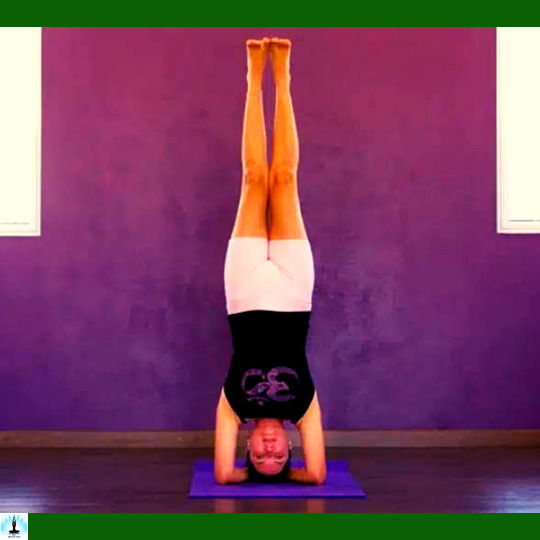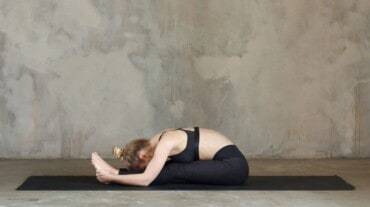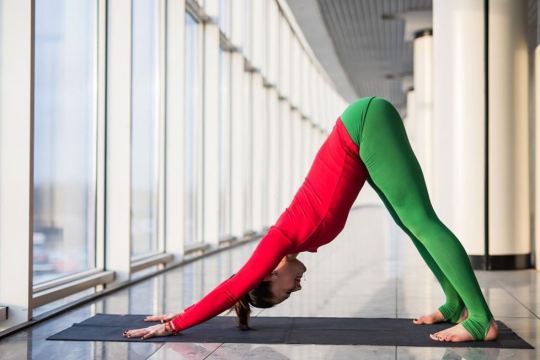#shirshasana
Photo

Enjoying the hometown view ☀️ It feels so good to be back on my mat, my community, my practice, my bed, my shower, my washing machine, my home, my juicer and the other creature comforts I take for granted when I’m here. Did you join for the live talk on @omstarsofficial this afternoon? What did you think? Who would like to see a live talk with next? Tim and I will be teaching in Miami next week for Mysore classes, Adjustment Clinic and Saturday Ritual @miamilifecenter and for two weeks in Mallorca and then again for our summer One Month Intensive in July. Next workshops: Malaysia, Vietnam, Taipei and Cincinnati. Come practice 🙏 Photo @ifilmyoga #yoga #yogi #headstand #beachyoga #miamiyoga #kinoyoga #sirsasana #shirshasana #ashtanga #ashtangayoga #ashtangi #omstars 💕 (at Miami Beach, Florida) https://www.instagram.com/p/CovDUq0ugGK/?igshid=NGJjMDIxMWI=
#yoga#yogi#headstand#beachyoga#miamiyoga#kinoyoga#sirsasana#shirshasana#ashtanga#ashtangayoga#ashtangi#omstars
14 notes
·
View notes
Text
#shirshasana#headstand#headstandpractice#headstandpose#yogameditation#iyengeryoga#yogapractise#yogastand#meditationchair
0 notes
Text


Why Shirshasana Is Called King of All Asanas?
Shirshasana, commonly known as the Headstand, is often hailed as the "king of all asanas" in the realm of yoga due to its myriad physical, mental, and spiritual advantages. This regal title is bestowed upon it for several reasons.
Firstly, mastering Shirshasana requires a high level of balance and core strength, showcasing a profound mastery over the body. The pose's inversion promotes enhanced blood flow to the brain, revitalizing the nervous system and improving cognitive function.
#shirshasana#yoga#headstand#day#yogapractice#yogainspiration#yogagirl#yogalife#yogateacher#yogaeverydamnday#yogalove#yogapose#asana#headstandpractice#yogaeverywher
0 notes
Video
Sirshasana || Shirshasana Kaise Kare || Sirsasana Benefits #yoga #yogapo...
Sirshasana : The Headstand That Will Make You Feel Amazing
Sirshasana, also known as the headstand, is a classic yoga pose that is said to have many benefits for both the mind and body. It is an inverted pose, which means that the head is lower than the feet. This inversion reverses the flow of blood in the body, which can have a number of positive effects.
The Benefits of Sirshasana
Some of the benefits of Sirshasana include:
1.Improved circulation
2. Increased energy levels
3.Reduced stress
4.Improved focus and concentration
5. Increased flexibility
6.Strengthened neck and shoulders
7.Improved digestion
8.Boosted immune system
9.Improved balance
10.The Risks of Sirshasana
While Sirshasana has many benefits, it is important to be aware of the risks before attempting it. These risks include:
1.Headaches
2.Dizziness
3.Nausea
4.Lightheadedness
5.Neck pain
6.Shoulder pain
7. Injury to the spine
How to Do Sirshasana
Preparation
Before attempting Sirshasana, it is important to warm up your body. This can be done by doing some light stretches, such as cat-cow pose or sun salutations. You should also make sure that you are in a well-ventilated area and that you have a yoga mat to protect your head.
Entry
To enter Sirshasana, start by kneeling on your mat with your hands shoulder-width apart. Place your forearms on the mat, with your fingers interlaced. Then, slowly lift your knees up off the mat, one at a time. Once your knees are off the mat, straighten your legs and lift your hips up. Your body should now be in a straight line from your head to your heels.
Maintaining the Pose
Once you are in the pose, try to relax your body and breathe deeply. You may want to keep your eyes closed to help you focus. Hold the pose for as long as you are comfortable, and then slowly lower yourself back down to the mat.
Exit
To exit the pose, slowly bend your knees and lower your hips down to the mat. Once your hips are on the mat, gently lower your legs down.
Common Mistakes to Avoid
Some common mistakes to avoid when doing Sirshasana include:
1. Not warming up properly
2. Not using a yoga mat
3.Lifting your head up too high
4. Arching your back
5. Locking your knees
6. Putting too much weight on your head
7. Modifications for Beginners
If you are a beginner, there are a few modifications that you can make to make Sirshasana easier. These modifications include:
1.Placing your hands on a wall instead of the mat
2.Using a chair to support your legs
3.Doing a supported headstand against a wall
4. Advanced Variations of Sirshasana
Once you have mastered the basic version of Sirshasana, you can try some advanced variations. These variations include:
1.Handstand
2.Tripod headstand
3.Shoulder stand
4.Forearm stand
Conclusion
Sirshasana is a challenging but rewarding yoga pose. If you are looking for a pose that can improve your circulation, energy levels, and focus, then Sirshasana is a great option. However, it is important to be aware of the risks before attempting this pose. If you are a beginner, it is best to start with modifications and then gradually work your way up to the full pose.
You May Also Like : Why is Yoga for Everyone
#youtube#sirsasana#shirshasana#sirshasana#sirsasana for beginners#sirsasana yoga#janu sirsasana#sirsasana kaise kare#shirshasana for beginners#shirshasana kaise kare#sirsasana benefits#hirshasana kaise karen#shirshasana karne ke fayde#janu sirshasana#how to do janu sirsasana#janu sirsasana kaise kare#step bu step janu sirsasana#janu sirsasana karne ke fayde#shirshasana yog#como fazer sirshasana#sirsasana prashant#benefits of sirshasana
0 notes
Text
Shirshasana for beginners
How to Practice Shirshasana or Headstand Safely and Effectively?
Shirshasana is an advanced yoga pose and should be practised under the guidance of a trained yoga teacher. Before attempting Shirshasana, it’s important to prepare your body with other yoga poses that strengthen the arms, shoulders, and core.
We will explore Shirshasana for beginners as mentioned below:
Begin in a kneeling…Read More

View On WordPress
#adiyogi#headstand#mental health#ramdev baba yoga#shirshasana#shirshasana benefits for hair#theinfoduniya#Yoga Asanas#Yoga for Sleep#Yoga for Strength#yoga for stress and anxiety#Yoga for Weight Loss#Yoga Philosophy
1 note
·
View note
Photo

Sirasasana (Head stand pose) in irumbai temple #temple #irumbai #sivan #sivatemple #yoga #hatha #hathayoga #asana #sirsasana #salambasirsasana #headstandpose #shirshasana #headstand #headstandposevariation #VigeDr #veterinarian #chocolatebrownhandsome (at Sri Irumbai Mahakaleshwar) https://www.instagram.com/p/Ce-va6fBoDz/?igshid=NGJjMDIxMWI=
#temple#irumbai#sivan#sivatemple#yoga#hatha#hathayoga#asana#sirsasana#salambasirsasana#headstandpose#shirshasana#headstand#headstandposevariation#vigedr#veterinarian#chocolatebrownhandsome
0 notes
Link

#Shirshasana Stand#Grip Shirshasana Stand#Shirshasana Stand Manufacturer#Shirshasana Stand Wholesaler#Shirshasana Stand Supplier
0 notes
Text
How to do Shirshasana: ये है शीर्षासन का सही तरीका
How to do Shirshasana: ये है शीर्षासन का सही तरीका
How to do Shirshasana: शीर्षासन (Shirshasana) एक ऐसा योग है जिसका अभ्यास कर लेने पर याददास्त की समस्याएं हमेशा-हमेशा के लिए खत्म हो सकता है। शीर्षासन (Shirshasana) का चमत्कारिक परिणाम कई ग्रन्थों में बताया गया है। महर्षि घेरण्य ने ने भी इस आसन को मानसिक मजबूती का जरिया बताया है साथ ही साथ इसके दर्जनों अनेक फायदों का भी जिक्र किया है।
How to do Shirshasana? || शीर्षासन कैसे करें?
शीर्षासन का…

View On WordPress
0 notes
Text

Urdhva Padmasana also known as Upward Lotus is a yoga posture done in the Ashtanga yoga finishing series followed by Sarvangasana. This posture must be attempted only when one is proficient in padmasana and Sarvangasana. This is one of the head low postures hence known to give all the benefits the same as one derives while performing Shirshasana or Sarvangasana.
Apply for the Advance 300 Hour Hatha-Ashtanga Yoga Teacher Training Program in Rishikesh: https://adiyogaashram.com/300-hour-yoga-teacher-training-course-in-rishikesh.php
10 notes
·
View notes
Text

Urdhva padmasana or also known as upward lotus is a yoga posture done in the ashtanga yoga finishing series followed by Sarvangasana. This posture must be attempted only when one is proficient in padmasana and Sarvangasana. This is one of the head low posture hence known to give all the benefits the same as one derive while performing shirshasana or Sarvangasana.
“Urdhva means upward and Padma is lotus and asana is posture”.
.
𝐅𝐨𝐫 𝐈𝐧𝐪𝐮𝐢𝐫𝐢𝐞𝐬 & 𝐌𝐨𝐫𝐞 𝐃𝐞𝐭𝐚𝐢𝐥𝐬:
Website: https://aatmyogashala.com/
Call OR WhatsApp: +91-8445993766
E-mail: [email protected]
#urdhvapadmasana#yoga#padmasana#headstand#yogapractice#yogainspiration#yogalife#yogaeverydamnday#yogaeverywhere#yogapose#yogateacher#yogaeveryday#yogainindia#yogattcinrishikesh#bestyogaschool#aatmyogashala#aatmyogashram
5 notes
·
View notes
Text
10 Amazing Wellness Tips by Yoga Experts to Sharpen Your Memory

Introduction 10 Amazing Wellness Tips
In today’s fast-paced world, where information is too much on the internet and constant distractions have become the norm, a sharp and reliable memory is much essential for success an individual’s good life.
The ability to retain and recall information not only helps in academic and professional life but also enriches personal experiences and relationships.
practices like yoga offer a treasure of wisdom that extends beyond physical fitness and relaxation. Yogawith its holistic approach to wellness, has been recognized by experts as a powerful practice to sharpen memory and enhance cognitive function.
Memory is a fundamental aspect of human cognition. It enables us to learn, adapt, and make informed decisions based on past experiences. From remembering important dates and appointments to recalling intricate details of a story or lecture, memory underpins our daily activities.
Yet, as we age or experience periods of stress, memory can falter, leading to forgetfulness and frustration.
Yoga—an ancient discipline that originated in India thousands of years ago. Yoga, which means “union” or “harmony,” encompasses physical postures, breath control, meditation, and ethical principles, all designed to bring about balance and integration within the individual.
While yoga has gained immense popularity as a means of improving physical flexibility, strength, and relaxation, its impact on mental faculties, particularly memory, has increasingly captured the attention of researchers and practitioners alike.
In this article, we will go into ten amazing wellness tips recommended by yoga experts to sharpen memory and enhance cognitive abilities.
tips, rooted in the profound wisdom of yoga, offer a holistic approach to memory enhancement that extends beyond mere memory exercises. Instead, they embrace a mind-body-spirit connection that fosters a comprehensive transformation in one’s cognitive functions.
Embrace Mindfulness Meditation

Mindfulness meditation is a cornerstone of yoga practice that involves focusing on the present moment without judgment. Regular mindfulness meditation has been associated with numerous cognitive benefits, including improved attention and memory.
By training the mind to be fully present, it becomes easier to concentrate and retain information effectively. This form of meditation also reduces stress, a factor that can negatively impact memory.
Practice Pranayama Breathing Techniques
Pranayama, the art of breath control, is a vital component of yoga. Breathing exercises like NadiShodhana (alternate nostril breathing) and Kapalbhati (skull-shining breath) can invigorate the brain and enhance its functioning.
Increased oxygen supply to the brain through controlled breathing revitalizes the neural networks, promoting better memory and mental clarity.
Engage in Brain-Boosting Asana
Certain yoga asana (postures) are specifically beneficial for cognitive function and memory enhancement. Poses like Padmasana (lotus pose), Sarvangasana (shoulder stand), and Shirshasana (headstand) stimulate blood flow to the brain and improve focus.
They also activate the pineal gland, which plays a crucial role in regulating circadian rhythms and optimizing sleep—a key factor in memory consolidation.
Stick to a Yogic Diet

A nutritious diet is vital for overall well-being, including brain health and memory function. Yogic dietary principles encourage the consumption of fresh fruits, vegetables, whole grains, nuts, and seeds.
Foods rich in antioxidants, such as berries and leafy greens, protect brain cells from oxidative stress. Omega-3 fatty acids found in fish and nuts are also known to support memory and cognitive abilities.
Cultivate a Regular Yoga Practice
Consistency is the key to reaping the benefits of yoga for memory enhancement. Engaging in a regular yoga practice, even if it’s just for a few minutes each day, can make a significant difference.
Yoga postures, combined with mindfulness and breathing exercises, help reduce stress, improve focus, and promote mental clarity, all of which contribute to better memory retention.
Practice Visualization Techniques
Yoga experts often recommend incorporating visualization techniques into the practice to enhance memory. Visualization involves creating vivid mental images of the information you want to remember.
By engaging multiple senses, you create stronger neural connections, making it easier to recall the details when needed.
Participate in Yoga Nidra

Yoga Nidra, also known as yogic sleep, is a deep relaxation practice that facilitates profound rest and rejuvenation. During Yoga Nidra, the brain transitions into a state of alpha brainwave activity, akin to a meditative state.
This practice reduces stress, enhances creativity, and improves memory retention, as the mind becomes more receptive to learning and retaining new information.
Incorporate Mindful Movement into Daily Life
Apart from structured yoga sessions, incorporating mindful movement into your daily routine can boost memory and cognitive function. Activities such as walking or doing household chores with full awareness and presence help strengthen neural connections and improve memory recall.
Practice Gratitude and Positive Affirmations
Cultivating an attitude of gratitude and using positive affirmations can have a significant impact on memory and overall well-being. Gratitude practices reduce stress hormones, improving memory and cognitive abilities. Positive affirmations can also help rewire negative thought patterns, enhancing focus and mental clarity.
Read More :-
0 notes
Text
Does Facial Yoga Actually Work
SHIRSHASANA (Headstand): 🙃 Elevate your hair game! This pose boosts blood circulation to the head, showering your scalp with nutrients for luscious locks and a radiant complexion.
SARVANGASANA (Shoulder Stand): 🤸♀️ Supercharge your thyroid, the VIP of metabolism. This pose not only keeps stress at bay but also adds a touch of glam to your mane, preventing hair loss and adding a glossy sheen.
HALASANA (Plow Pose): 🌿 Say goodbye to stress and hello to detox! Halasana is your go-to for improved digestion, giving your skin that enviable glow from the inside out.
MATASYASANA (Fish Pose): 🐟 Dive into beauty with this pose! Unlock your chest and throat, giving your thyroid a boost and sending a wave of circulation to your face for a complexion and hair that scream vitality.
PASCHIMOTTANASANA (Seated Forward Bend): 🧘♂️ Unwind stress, unleash beauty! This forward bend not only eases tension but also directs a flow of blood to your scalp, ensuring your hair and skin radiate health and vibrancy.
To Know More:- https://iksanawellness.com/
0 notes
Text
9 yoga asanas to boost brain power and fitness

Do you find it difficult to remember things and concentrate on your work? This may be due to lack of brain agility. Your brain plays an unprecedented role in controlling daily functions such as memory, thoughts, emotions, appetite and every bodily function and process. If your brain is not active, you will have difficulty performing normal tasks. Try these yoga poses for brain power to combat the factors that contribute to brain degeneration.
9 yoga asanas to increase brain power
1. Bhramari pranayama
This yoga pose involves calming breathing techniques that reduce stress and anxiety and help boost cognitive function. Here's how to execute it:
- Sit in a comfortable position.
- Close your eyes and take a deep breath.
- Take a deep breath in through your nose and as you exhale, make a humming sound like a bee.
- As you exhale, gently close your ears with your thumbs, placing your index fingers on your forehead.
- Repeat this process a few times while focusing on the soothing vibrations within your head.

Practice breathing techniques to feel energized on a dull day. Image Courtesy: Adobe Stock
2. Padmasana (Lotus Pose)
Padmasana is a meditation pose that encourages proper posture and focused breathing. This helps calm the mind and promote mental clarity. Here's how to execute it:
- Sit on the floor with your legs spread.
- Bend your right knee and place your foot on your left thigh.
- Similarly, bend your left knee and place your foot on your right thigh.
- Keep your spine straight, hands on knees and palms facing upward.
- Take deep breaths and find a meditative state.
3. Vajrasana (Thunderbolt Pose)
Vajrasana is known to promote digestion and a healthy gut is linked to a healthy mind. Here's how to execute it:
- Kneel on the floor with your big toes touching and your heels apart.
- Sit on your heels keeping your spine straight.
- Place your hands on your thighs and focus on your breathing.
4. Paschimottanasana (Sitting Forward Bend)
This forward bending posture stimulates the nervous system and improves blood circulation in the brain. Here's how to execute it:
- Sit on the floor with your legs spread.
- Inhale and lengthen your spine.
- Exhale, bend forward from your hips and reach toward your feet.
- Keeping your back straight, hold your feet or shins.
- Feel the stretch in your spine, promoting relaxation and mental clarity.

To remove belly fat, it is best to sit in a forward bend. Image Courtesy: Adobe Stock
5. Sarvangasana (Shoulder Stand)
This yoga pose involves balancing the entire body on the shoulders. Apart from improving brain power, it also has positive effects on the thyroid gland, regulating metabolism and energy levels. Here's how to execute it:
- Lie on your back and lift your legs, bringing them above your head.
- Support your lower back with your hands and straighten your legs upward.
- Keep your body in a straight line while balancing on your shoulders.
- This inversion pose increases blood circulation in the brain, which improves focus.
6. Halasana (Plough Pose)
Halasana stimulates the brain by increasing blood flow to the head. This pose also stretches the spine and shoulders, releasing tension and promoting relaxation, which is essential for cognitive function. Here's how to execute it:
- Lie on your back, lift your legs above your head and touch the ground behind you.
- Keeping your legs straight, support your lower back with your hands.
7. Mayurasana (Peacock Pose)
This yoga pose not only strengthens the abdominal muscles but also stimulates the digestive organs. Moreover, it relaxes your body and mind effectively. Here's how to execute it:
- Kneel on the floor, placing your hands shoulder-width apart.
- Bend your elbows and bring your torso forward, resting on your triceps.
- Raise your legs by extending them backwards.
8. Shirshasana (Headstand)
This yoga pose increases blood circulation and nourishes brain cells, enhancing cognitive function. Here's how to execute it:
- Start on your hands and knees.
- Rest your forearms on the ground, interlacing your fingers.
- Place the crown of your head on the ground, lifting your hips toward the ceiling.
- Straighten your legs, forming a straight line from head to heels.

Do this yoga asana carefully. Image Courtesy: Adobe Stock
9. Ardha Matsyenrasana (Half Lord of the Fishes Pose)
This seated spinal twist stimulates the spine, promotes flexibility and strengthens the back muscles and has a therapeutic effect on the mind. Here's how to execute it:
- Sit with your legs spread.
- Bend your right knee, placing the foot on the outside of your left thigh.
- Turn your torso to the right, placing your left elbow on the outside of your right knee.
Do these yoga asanas regularly to reap these benefits and improve your mental strength and agility!
Read the full article
#brainfitness#healthshots#howtoincreasebrainpower#mentalstrength#sum#Yogaasanasforbrainpower#yogabenefits#YogaforBrain#Yogaforbrainfitness#Yogaforbrainhealth#Yogaforbrainstrength#Yogaforsharpmind
0 notes
Text

Halasana (Plow Pose):
This pose involves folding the body over and bringing the legs over the head, akin to the position in Shirshasana. Halasana stretches the spine, shoulders, and hamstrings while stimulating the abdominal organs.
#chicago#newyork#atlanta#losangeles#miami#illinois#california#music#chitown#love#hiphop#usa#texas#florida#houston#art#fashion#photography#nyc#dallas#windycity#detroit#lasvegas#instagood
4 notes
·
View notes
Text
Conseils pour faire des poses de yoga d'inversion
Conseils pour faire des poses de yoga d'inversion
youtube
Le poirier (salamba shirshasana) est l'une des poses de yoga considérées comme des poses d'inversion. Les poses d'inversion impliquent toutes les asanas qui soulèvent les pieds au-dessus de la tête. D'autres poses d'inversion bien connues incluent l'épaule (salamba sarvangasana) et la demi-épaule (viparita karani). Mais même allongé sur le sol avec vos jambes sur une chaise est une pose d'inversion.

Le idea derrière les poses d'inversion est exprimé dans les textes de yoga comme viparita karani. Viparita karani est traduit par « processus opposé ». Cela signifie simplement faciliter une point of view différente. D'un issue de vue purement physique, cette perspective différente dans les poses d'inversion est littérale - en termes de regarder le monde d'un stage de vue physique diffélease - ainsi que d'impliquer le corps étant soutenu d'une manière différente. Mais comme le yoga est additionally que de simples exercices physiques, il existe d'autres processus qui sont assistés. Beaucoup de yoga est conçu pour nous aider à changer nos habitudes mentales ainsi que nos habitudes physiques. En augmentant notre capacité à nous adapter au changement, au lieu de nous enliser dans de vieilles réponses habituelles, nous augmentons notre capacité de croissance et de transformation. Cela s'applique à tous les domaines de notre vie. Il existe un strategy théorique dans le yoga sur l'aide des postures d'inversion. L'Ayurveda considère que de nombreuses impuretés du corps se trouvent dans le bas-ventre. Lorsque nous élevons nos pieds au-dessus de la tête, la gravité nous aide à déplacer ces impuretés vers ce que le système ayurvédique appelle agni, ou « feu ». Agni se rapporte particulièrement à notre "feu digestif", et se situe donc au-dessus de notre bas-ventre. Ainsi, en étant la tête en bas, et en utilisant la respiration profonde et lente typique du yoga, nous aidons à "brûler" les impuretés qui étaient auparavant bloqués. L'amélioration de la circulation est un avantage furthermore évident et moins « ésotérique » des poses de yoga d'inversion. Alors que les postures d'inversion ont de nombreux avantages pour la santé, la capacité d'un individu à recevoir ces avantages dépend comme beaucoup sur leur capacité à tenir confortablement ces postures parfois difficiles. Par exemple, le poirier et l'épaule ne devraient tout simplement pas être faits si les personnes sont enceintes, ont des douleurs au cou, une pression artérielle élevée ou basse, des blessures au cou ou ont leurs règles. Et aucune de ces postures ne doit être tentée sans les postures préparatoires appropriées. Sinon, le risque existe qu'une blessure ou une raideur, en particulier au niveau du cou, en résulte. De même, si ces Free postures sont très inconfortables et difficiles, furthermore d'avantages seront tirés des versions modifiées, ou travailler simplement sur d'autres poses de yoga qui renforcent ces zones. Il existe plusieurs problems préalables importantes pour tirer le meilleur parti des inversions. Le premier, un cou fort, je l'ai mentionné. Les autres sont un dos et des muscles abdominaux forts, et la capacité de bien respirer dans la posture. Ce dernier va s'améliorer avec la pratique, à la fois du yoga lui-même et des inversions. C'est aussi quelque peu lié au fait d'avoir un dos fort. Nos muscles du dos et de l'estomac fourniront le soutien nécessaire pour maintenir les jambes droites, ce qui o
0 notes
Text
Ardha Shirshasana Benefits and Steps Rudra Yoga Course
Ardha Shirshasana Benefits and Steps
Ardha Shirshasana is a variant of the conventional Shirshasana, or Headstand pose, in which the entire body weight is supported on the head. The strain is spread between the head and the forearms in Ardha Shirshasana, lessening the intensity while yet having a significant influence on the body and mind.

Ardha Shirshasana Benefits
Improved Balance: As you stabilise your body with your head and forearms, Ardha Shirshasana requires a strong sense of balance. Regular practise can improve your overall balance and coordination, allowing you to stay balanced both on and off the mat.
For More Info Visit: https://www.rudrayogaindia.com/ardha-shirshasana-benefits-and-steps
0 notes